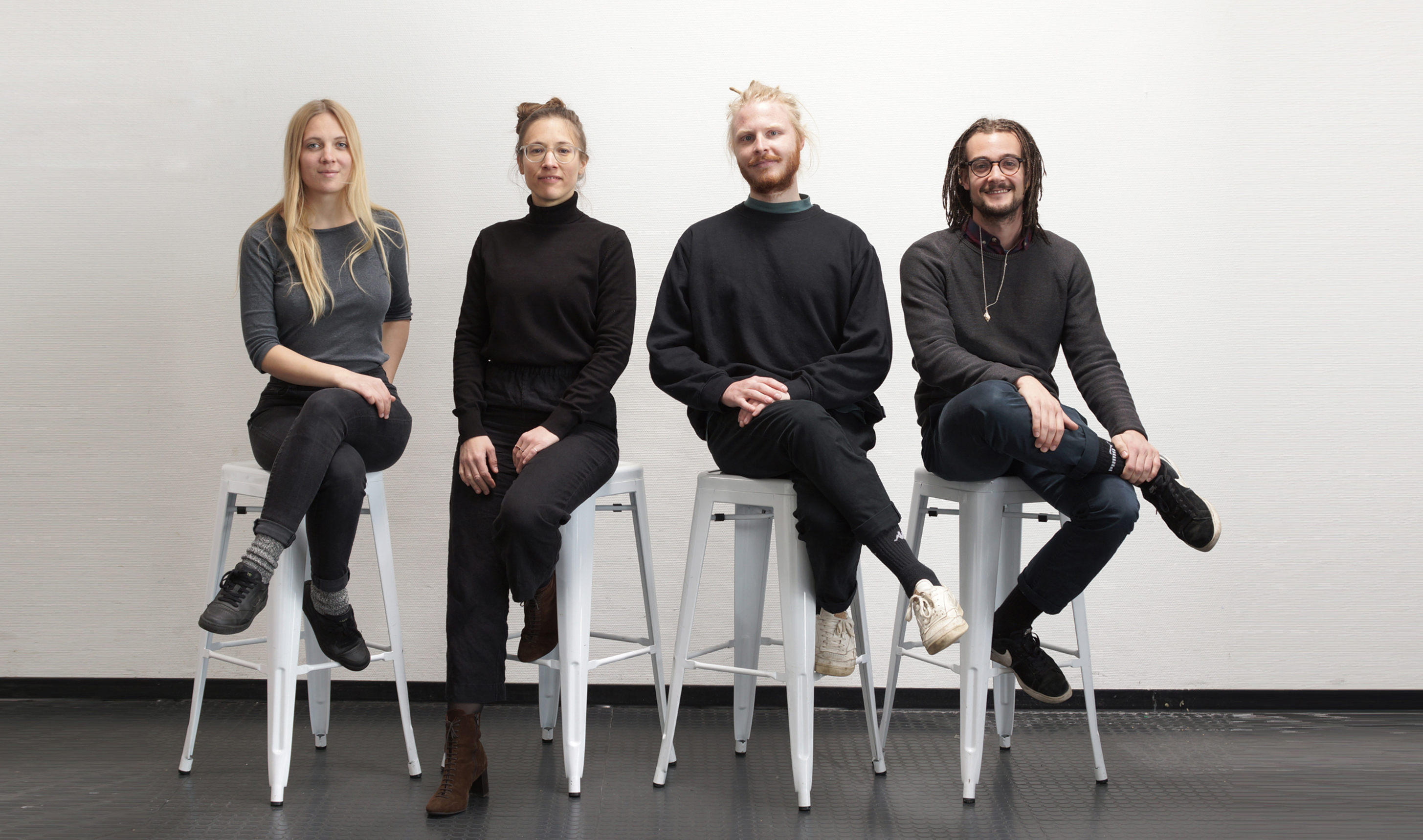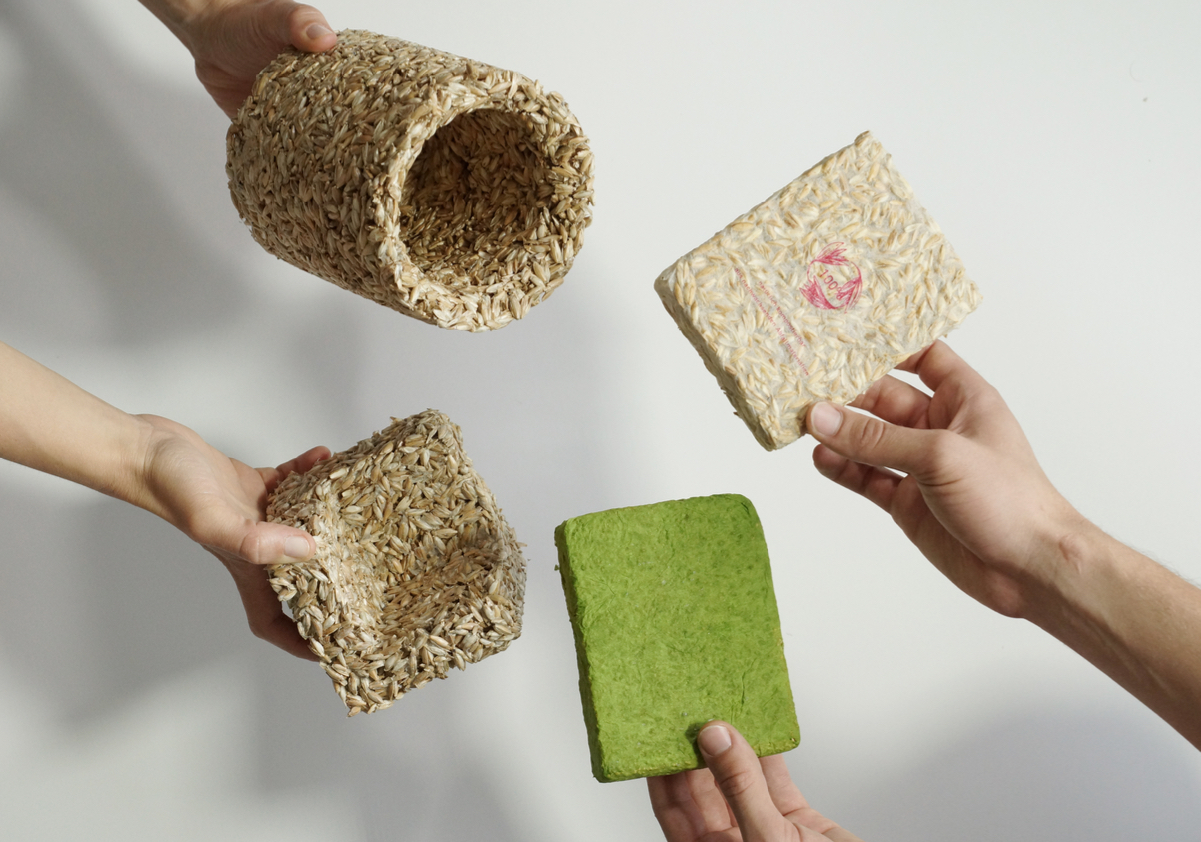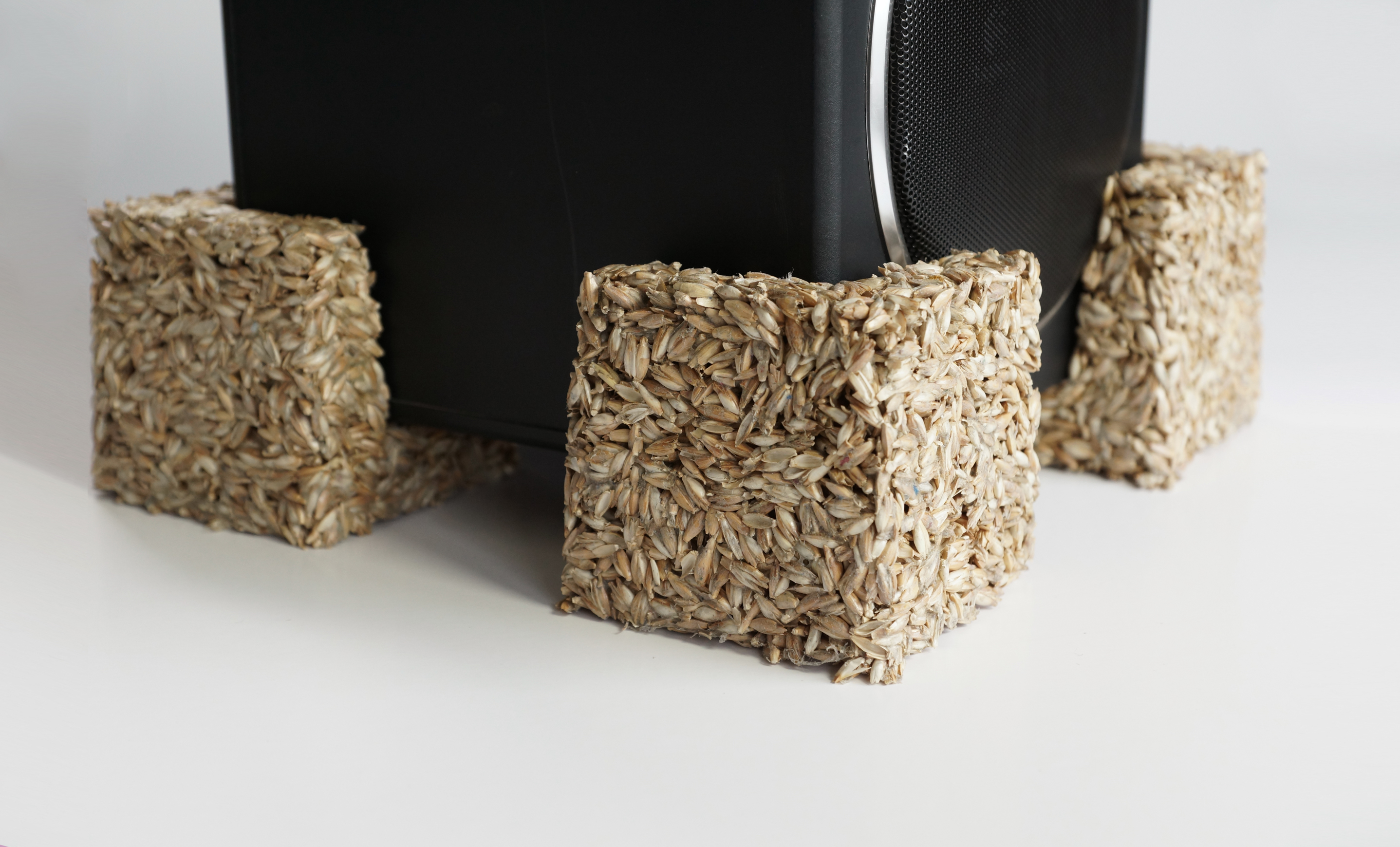Main navigation
Husk as a substitute for polystyrene: packaging materials with a good conscience
Expanded polystyrene (EPS) packaging is very practical, but it is made from petroleum and is not very environmentally friendly in other ways either. Single-use plastic containers made of EPS have therefore been banned in the EU since July 3, 2021, but alternatives are also urgently needed for other applications. The Stuttgart-based start-up PROSERVATION has developed an ecological packaging material made from grain husks that could replace EPS and be just as effective.
Expanded polystyrene (EPS), commonly known also as airpop®, styropor® or styrofoam® - has many good properties: it is lightweight but stable and impact-resistant, inexpensive, and insulates against heat and cold, as well as being moisture-resistant. It is therefore understandable that it is often used for packaging goods that need protecting - but this has fatal consequences for our environment. Not only does it take almost three litres of petroleum to produce one kilogramme of EPS, but the production process itself is also energy-intensive and disposal is problematic: the material is not degradable, and if it ends up in the natural environment, it takes centuries to decompose into microplastics, making it an ecological problem. In addition, the German Packaging Act, which entered into force on 1st January 2019, classifies EPS as non-recyclable.

High time, then, to look for alternatives. That's why novel packaging solutions are becoming an increasingly important area of study in the Packaging Development Management course at Hochschule der Medien/Stuttgart Media University (HdM). When Lisa Antonie Scherer was studying for her master’s degree at the university, as part of a study project she was asked to experiment with cellulose foams to generate cushioning air pockets for packaging purposes. This led her to look into which organic materials had natural cavities in them, with the idea that it would be wiser to use them if they existed. This made her think of her father, who had long slept on a husk pillow, and she began experimenting with material made from grain husks.
Spelt packaging uses natural residual materials
Husk or hull is the dry outer coating of grasses - especially grains - that protects the flowers and accumulates after threshing. Most of the husk is discarded and left unused. As part of her experiments, Scherer developed a prototype packaging material made from husk, which attracted the interest of Prof. Dr. Michael Herrenbauer, who was a supervisor at the HdM. Scherer's work more than paid off: the young packaging technician now has her master's degree to show for it, and has already applied for a Europe-wide patent for her innovative idea - and a company start-up is being planned.
Together with her sister Sophia Scherer (B. Eng. Packaging Technology), her two friends Nils Bachmann (M. Sc. Business Informatics) and Henning Tschunt (MBA Sustainable Business Management), with department head Herrenbauer as her mentor, Lisa Antonie Scherer is on the verge of founding her own company, supported by a government-funded EXIST programme grant. The start-up is called PROSERVATION, an invented word that combines the proactive-optimistic approach of the founders with the preservation of our natural livelihood.
Spelt, rice & co: everything with cavities is being looked into

All types of husk can be used for the innovative material at the heart of the company. "At the moment, we mainly use spelt husk because we can source it from the region without having to travel long distances," explains Tschunt, who is in charge of corporate strategy at PROSERVATION. "However, we are also assessing whether other types of husk can be used for this purpose, for example, rice and buckwheat husk. Basically, all kinds of husk whose cavities remain largely intact after threshing or dehusking are suitable."
A simple and low-energy manufacturing process is currently being optimised with the aim of industrial scaling, and can be used to produce differently shaped cushioned items. "Different degrees of hardness can be achieved, from firm to very hard, even harder than EPS. The negative moulds required for shaping the first prototypes were designed by the company team and are currently being produced with 3D printers at HdM. "At the moment, our team is still working with a provisional pilot system, but the process will be translated into an industrial manufacturing process in the near future," says Tschunt.
Shipping container for glass jars and edge protectors as first products

The first concrete products made of the novel material are already being manufactured. "Our material demonstrates its advantages especially in direct comparison with EPS. We focus specifically on producing packaging for household appliances (white goods) that are packaged here in Germany," says Tschunt. "However, a number of things still need to be clarified, so we have been looking around for a bridging market. That’s when we came across wine bottle shipment – a highly topical area during the coronavirus pandemic. It goes without saying that our sustainable packaging material would be best suited for packaging organically grown wine from the region. But most winemakers we’ve spoken to already have acceptable cardboard solutions in place and don't necessarily see the need to replace these at the moment. However, we are pursuing this and have already developed prototypes for 2-piece and 6-piece shipping cartons."
Although wine bottles are not yet a firm market, it’s a different story for the packaging of other glass containers: "Sometimes things turn out differently than originally planned," says Tschunt. "Through our contact with the start-up Reco-E, which recycles metal powder from electronic scrap and ships it inside glass containers, we are currently developing our first pilot product and then want to focus further on solutions for shipping glass containers. A second area we’re planning on focusing on is basic protective corners for edge protection, which can be produced effectively from the new type of material."
Vision for the future: replacing as much EPS as possible with spelt packaging
Sustainable competitor products that also target the ‘ultimate enemy styropor’, as Tschunt refers to the most widely used material for producing plastic packaging, already exist. These include cellulose-based solutions, and materials made from fungal mycelia or straw. "But a comparable material with properties like styropor or our spelt packaging does not yet exist," he says. "And in terms of price, we believe that, in the future, we’ll be able to offer our packaging at a price that’s not that much higher than styropor. We will be able to keep the price level relatively low as soon as our production volume increases and EPS becomes more expensive due to government measures, and of course because the husks are residual materials and therefore very, very cheap."
Currently, the products of the emerging company are still at a very early stage. Premises have been provided by the HdM: three small containers containing the pilot plant plus office space. Until the end of the EXIST funding phase in early 2022, the founding team still has a mountain of work ahead of them. And they are convinced that it will pay off, because if everything goes as planned, they will make a growing contribution to reducing plastic use by replacing EPS packaging in the next few years.